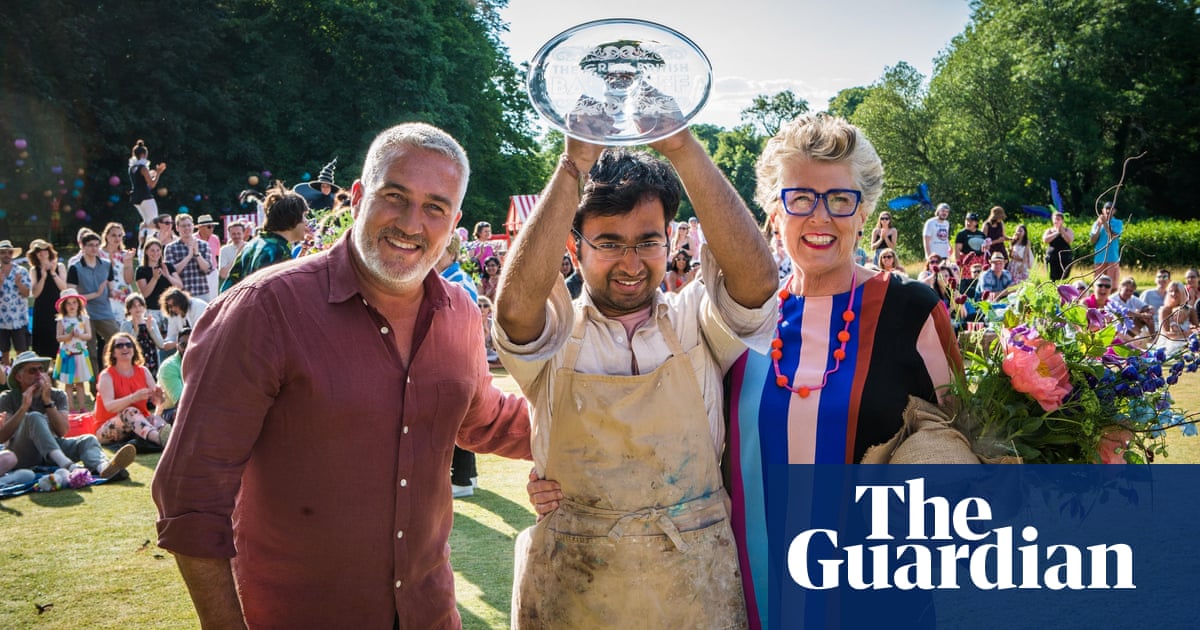
‘Iwant people to realise disabled people live in a very different world,” says Caroline Cardus. Her artwork, one of 30 being displayed in galleries across the UK on Saturday, depicts scenes from Britain’s decade of austerity – there is even a magic money tree – and asks viewers to consider the brutal impact those political decisions had on disabled people. So far, so conventional.
Except her medium is cake and the austerity scenes are made out of fondant icing. Cardus wanted to explore the tension created when the politics of people being too poor to eat is embodied in a frivolous foodstuff – let them eat cake writ large. During the show at Milton Keynes’ MK Gallery, Cardus is going to give a “cake-pun filled rant” of an artist’s talk (a certain someone’s ambushing by a cake may feature) about the effect austerity has had on disabled people, heightening the absurdist sense of contrast even more. “I like humour in my work even if it’s dark humour – and this is going to be pretty dark,” she says.
Cardus’s work is part of a coordinated one-day takeover of museums and galleries by disabled artists. Titled We Are Invisible, We Are Visible (WAIWAV), each artwork aims to uncover a hidden aspect of the disabled experience. The selection of pieces is as varied as disability itself – there are performances, visual installations and spoken word readings spread across the whole country, from Gateshead to St Ives and Belfast to London. Each seeks to highlight an aspect of life where disabled people are assumed to be excluded but are actually present: an intervention in Derry will explore the notion of “accessible protest” while another in Colchester will look at choreography for deaf dancers.
The WAIWAV takeover has been organised by Mike Layward, the artistic director of the disability arts charity Dash. He emphasises the satirical thread in a lot of disability arts pieces, including those chosen for this project. After austerity and a pandemic in which disabled people were made vulnerable by government failure, there is rage both in disability politics and in the community, but he didn’t want the project to be angry. “That’s not fair to put on people” who’ve just come to support artists, he says, especially as many in the audience may have also been victims of government callousness.
Instead, Layward says, he chose work that “has an edge to it. We had a really long discussion [with the artists] about how, once you do anything like this, some people will be uncomfortable. As long as they can move away, that’s not a problem. I was worried that some artists were thinking they had to tone down what they were doing, and they shouldn’t.”
Layward took inspiration from the dadaist movement, which sprung up at the end of the first world war in response to the horrors Europe had witnessed. Like the later disability arts movement of the 1970s and 80s, dadaism harnessed surrealism to talk about real, tough topics, often using waste as artistic material to evoke the lives wasted on the battlefields. “I’m always cautious to compare Covid to a war,” says Layward, “but at times it felt like it [for disabled people]. So it felt natural to link the two movements. I wanted to ask what Dada would have been like if it had started in 2020, not 1917.”
These intertwined ideas of surrealism, humour and a punchy political message are all present in another of the interventions. Lisette Auton’s contribution, which will be shown at Mima (Middlesbrough Institute of Modern Art), is a continuation of her long-running project, Writing the Missing. The performance sees Auton create her own outfit – a dress – from origami. Each piece that will be added throughout the day will include a “missing” – that is, a part of the disabled experience that is ignored or erased. Many of them will be provided by the audience, who will write their missings on pieces of paper that when folded turn into tiny stars. The stars will then come together to form a train for Auton’s newly assembled ball gown. Thus the invisible is made visible.
The stars are intricate and delightful and Auton has made more than 600 of them by hand. Like Cardus’s cake, the pleasure of looking at them contrasts with the knowledge that they hold stories of pain. Auton sees missings in all facets of disabled life. She speaks of the years she lost by refusing to identify as disabled, when she hadn’t found the social model of disability or the disability arts movement. In this telling, each disabled person has their own missing: exclusion or loneliness or lost opportunities. But there is also the collective missing of disabled people’s invisibility in the media, politics and culture. Auton argues that they have been labelled as vulnerable and told to stay inside while the world continues without them.
There is “rage and protest” in the work, Auton acknowledges, but the word she uses most when describing her installation is “kind”. It is supremely accessible and people will be able to get involved or just observe, whether standing, sitting or lying down. Auton, too, will have a nap during the show; she intends to “reclaim durational performance” for artists with pain or fatigue.
Aaron Williamson’s installation at Birmingham’s Ikon Gallery puts absurdity front and centre. Inspired by first world war battleships, which forwent traditional khaki camouflage in favour of so-called “dazzle stripes”, Williamson has made himself a suit of highly geometric camouflage.
On the day, he is going to hide in plain sight within his installation – visible and invisible – and challenge the audience to put on 3D glasses and find him. He is saying: disabled people are here, if only society bothered to see them. “People tread on eggshells,” when it comes to disability, Williamson says, so the sense of play inherent in his hide-and-seek performance helps them lower their inhibitions and engage. And, he says, the only rational way to respond to how disabled people are treated is with absurdity. “You have to laugh,” he concludes.
It seems safe to say that, had the dada movement started in 2020, it would indeed have looked like this: 30 disabled artists taking over the nation’s leading cultural institutions for a day of satire, fun and performance. It would grapple with hard topics, and not shy away from making people uncomfortable. It would ask the audience to look for the missing pieces, while also making them laugh. It would bring in the experiences of those who are so often left out, and treat them with kindness. And, of course, it would involve a giant cake.
We Are Invisible We Are Visible is at 30 venues across Britain and Northern Ireland on Saturday 2 July












